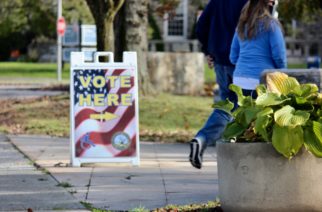
To the editor:
The success of public transportation can be traced back to one of the late President Lyndon Johnson’s greatest accomplishments which continues benefiting many Americans today. On July 9th, 1964 he signed the “Urban Mass Transportation Act of 1964” into law. Subsequently this has resulted in the investment over time of several hundred billion dollars into public transportation.
Millions of Americans today on a daily basis utilize various public transportation alternatives such as local and express bus, ferry, jitney, light rail, subway and commuter rail services. All of these systems use less fuel and move far more people than conventional single occupancy vehicles. Most of these systems are funded with your tax dollars thanks to President Johnson.
Depending upon where you live, consider the public transportation alternative. Try riding a local or express bus, commuter van, ferry, light rail, commuter rail or subway.
In New York state, downstate, we have the Metropolitan Transportation Authority (MTA) and its various operating agencies including New York City Transit, Long Island Rail Road, Metro North Rail Road, Staten Island Rapid Transit and MTA Bus.
Chartered by the State Legislature in 1965 as the Metropolitan Commuter Transportation Authority (MCTA), it was created to purchase and operate the bankrupt Long Island Rail Road. The MCTA changed its name to the Metropolitan Transportation Authority (MTA) in 1968 when it took over operations of the New York City Transit Authority. Previously, in 1953 the old NYC Board of Transportation passed on control of the municipal subway system, including all its assets to the newly created New York City Transit Authority. In 1968, the MTA also acquired through lease the New York State commuter trackage of Penn Central’s Hudson, Harlem and New Haven lines, contracting their subsidized operation to Penn Central. In 1976, they became part of Conrail.
In 1973, the MTA agreed to subsidize the existing Erie Lackawanna Railway Port Jervis service which also became part of Conrail in 1976.
In 1983 the Metro-North Railroad was formed to take over all of Conrail’s New York State commuter operations. The MTA took over all service in 1983, as the Metro North Railroad.
In 1971 the passenger operations of the former Staten Island Rapid Transit Railway Company, were acquired from the Baltimore and Ohio Railroad. The MTA created a subsidiary, the Staten Island Rapid Transit Operating Authority, for the purposes of operation and maintenance. It is currently managed by the MTA New York City Transit’s Department of Subways.
There is also New Jersey Transit (NJT), Port Authority of New York and New Jersey (PATH), New York City Department of Transportation (NYCDOT) Staten Island Ferry along with many suburban counties, cities and towns including Nassau, Suffolk, Westchester, Rockland, Putnam and Orange counties along with City of Long Beach and Town of Huntington all provide such options. There are other private bus and ferry operators along with many smaller suburban operators providing service.
Upstate, if you live in Albany, Binghamton, Buffalo, Dutchess County, Elmira, Glens Fall, Kingston, Ithaca, Niagara Falls, Oneonta, Poughkeepsie, Rochester, Syracuse Ulster, Watertown and others — there are municipalities, cities, counties or transit authorities providing local bus service.
In many cases, your employer can offer transit checks which help subsidizes a portion of the costs. Utilize your investments and reap the benefits. You’ll be supporting a cleaner environment and be less stressed upon arrival at your final destination.
Many employers now allow employees to telecommute and work from home. Others use alternative work schedules which afford staff the ability to avoid rush hour gridlock. This saves travel time and can improve mileage per gallon. You could join a car or van pool to share the costs of commuting.
The ability to travel from home to workplace, school, shopping, entertainment, medical, library etc. is a factor for moving into a new neighborhood. Economically successful communities are not 100 percent dependent on automobiles as the sole means of mobility. Seniors, students, low and middle income people need these transportation alternatives.
What better way to honor the late President Johnson and all that has been achieved these past 52 years as a result of the Urban Mass Transportation Act by continuing funding.
Larry Penner, Great Neck
Larry Penner is a transportation historian and advocate who previously worked 31 years for the U.S. Department of Transportation Federal Transit Administration Region 2 NY Office.









